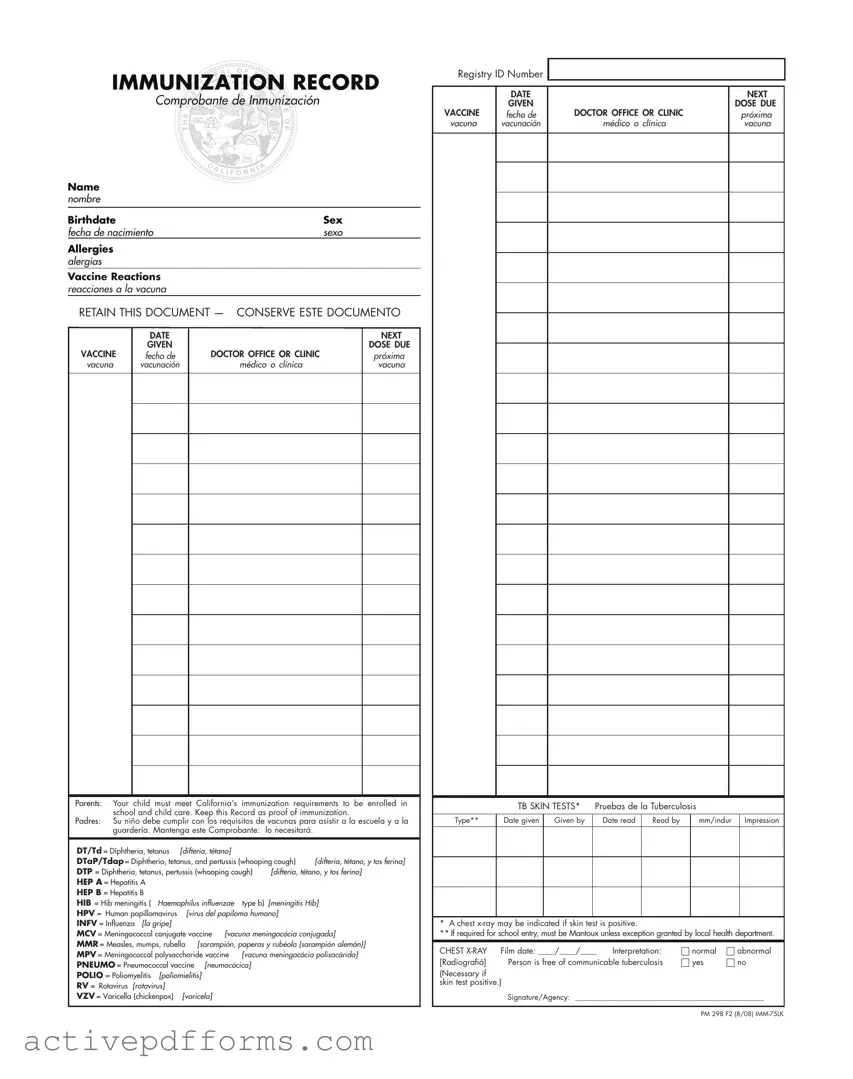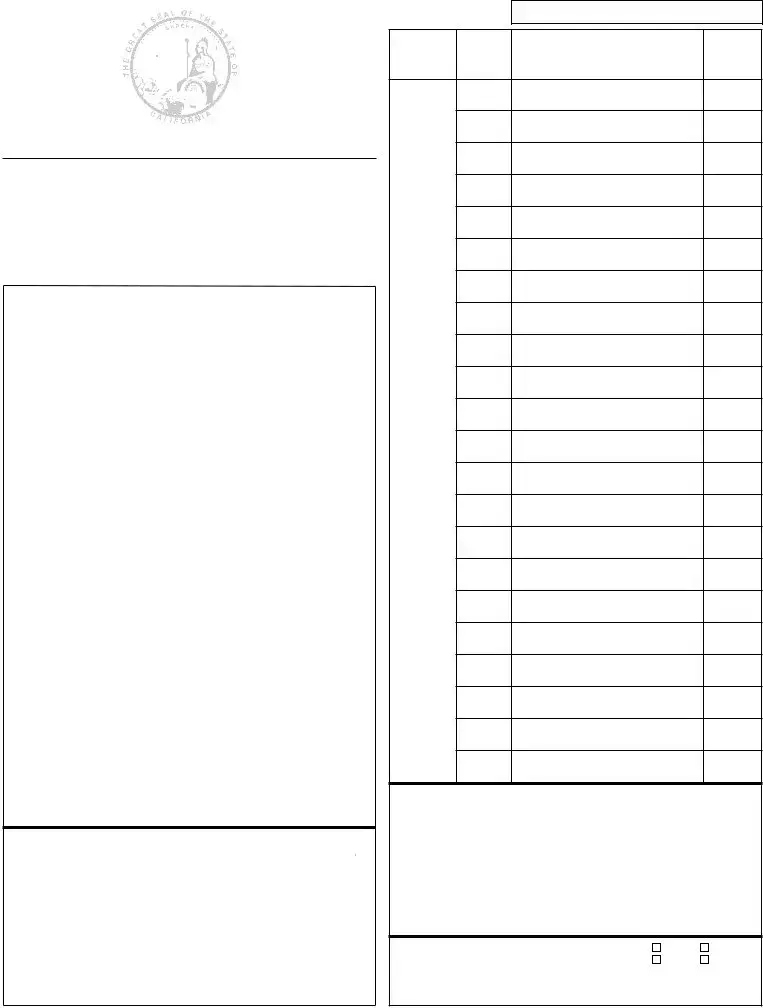Free Immunization Record PDF Template
The Immunization Record form serves as an official document detailing an individual's vaccination history, including types of vaccines administered, dates, and any reactions or allergies related to the vaccines. It is an essential record for school and childcare enrollment in California, emphasizing the importance of maintaining this document for proof of immunization. The form lists various vaccines, such as DTaP/Tdap, MMR, and Polio, alongside specific details like the next due dose and administering medical facility or professional.
Edit Immunization Record Now

